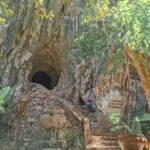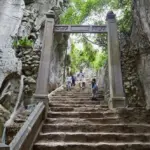Marble Mountains by Ovuigo : Overview and Location in Da Nang
The Marble Mountains, or Ngũ Hành Sơn, rise from the flatlands of southern Da Nang City with an elegance shaped by both nature and spirit. This cluster of five marble and limestone hills sits just south of central Da Nang, in Southeast Asia’s dazzling Vietnam. Located in the Ngu Hanh Son District, the Marble Mountains lie a short drive from renowned Non Nuoc stone carving village and the shimmering sands of My Khe Beach. This iconic landmark offers easy access to the incredible food, beaches, and culture of Da Nang, Quang Nam Province, and all of Indochina. View on Google Maps
Visitors to the Marble Mountains discover not only a physical wonder but a storied source of art, faith, and legend. With its caves, pagodas, and peaceful peaks overlooking the city and sea, the site stands as a sacred heartbeat of Da Nang tourism. Travelers seek out the Marble Mountains for their geological formation, religious significance, and unique blend of nature and culture. These mountains are not simply a Da Nang attraction—they are the very holonyms of Vietnam’s spiritual landscape, topped with Buddha statues and marked by the symbols of pagoda icons, marble sculpture, and serene mountain peaks.
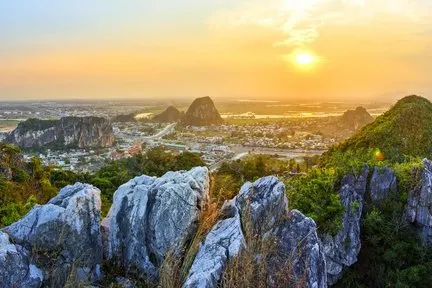
The Five Elements: Names and Significance of Each Hill
Each Marble Mountain carries a name and meaning drawn from the five elements of Eastern philosophy. Thuy Son (Water), Moc Son (Wood), Tho Son (Earth), Kim Son (Metal), and Hoa Son (Fire) form the pentad of Ngu Hanh Son. Thuy Son—largest, most accessible, and crowned with temples—draws the most visitors, welcoming everyone from pilgrims to photographers. This mountain, standing 106 meters tall, is home to several Buddhist temples and offers sweeping Da Nang sightseeing views.
Moc Son, notable for a white marble formation resembling a sitting Buddha, evokes tranquility and is often the quietest. Tho Son is the longest, appearing like a sleeping dragon, and holds hidden Buddhist sanctuaries in its shaded tunnels. Kim Son boasts the Quan The Am Pagoda, a key spiritual landmark, and caves adorned with ancient carvings. Hoa Son, in fact, consists of two twin peaks, concealing secret shrines and rare flora among its rocky outcrops.
Laced with symbols of ancient beliefs, the Marble Mountains have provided centuries of inspiration for Vietnamese marble artists and spiritual seekers. When visiting, allow time to appreciate each hill’s unique spirit and the living traditions linking the physical site to Vietnam’s deep sense of place, both within Da Nang and throughout Southeast Asia.
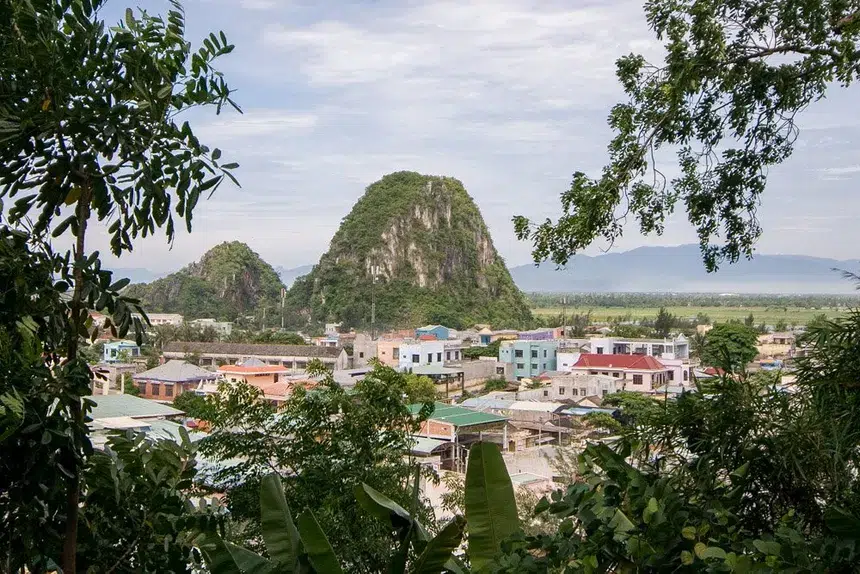
Sacred Sites: Pagodas, Buddhist Temples, and Spiritual Landmarks
Spirituality flows through the Marble Mountains. Pagodas and Buddhist temples crown the peaks and nestle within the caves, beckoning with their history and atmosphere. Linh Ung Pagoda, perched atop Thuy Son, draws pilgrims from across Indochina who pause before the marble Buddha statue and stone lanterns. Tam Thai Pagoda, one of the oldest in the city, stands in a garden of ancient pines and fig trees, echoing centuries of prayer and meditation.
These sacred temples are not mere relics or tourist attractions—they form the backbone of Vietnamese Buddhism in the region. Quan The Am Pagoda on Kim Son hosts the annual Quan The Am Festival, a major spiritual event drawing thousands for its processions, chanting, and lantern releases. The spiritual landmarks of Marble Mountains—each marked by rich legend and enduring belief—connect past and present. Touring these sites, visitors experience the living energy of Da Nang’s spiritual heart, surrounded by marble carvings and the gentle aroma of incense.
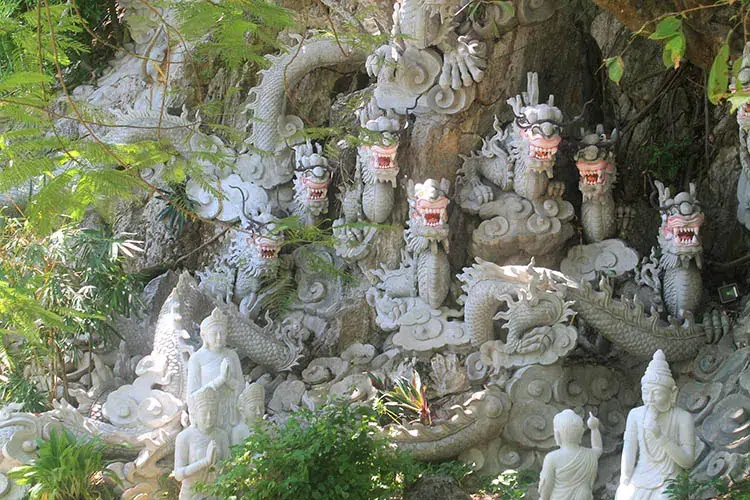
Caves and Hidden Wonders: Am Phu Cave, Hoa Nghiem Cave, and Secret Shrines
Beneath their peaks, the Marble Mountains conceal a labyrinth of limestone caves. Am Phu Cave—the largest and best-known—offers a journey into Vietnam’s Buddhist and mythological underworld. Visitors descend through dramatic gates into a world of stalactites, secret shrines, and ancient inscriptions. At every turn, Buddha statues and Hindu iconography share space among natural skylights and hidden altars.
Hoa Nghiem Cave, elevated along Thuy Son’s hillside, is celebrated for its serene Buddhist grotto and icon-filled alcoves. The cool, dim chambers contain age-old inscriptions, marbled altars, and remarkable acoustics that amplify prayer and music. Other hidden tunnels and small caverns throughout Tho Son and Hoa Son guard secret treasures, from faded murals to swiftlet nests and rare orchids.
The caves have played roles as holy sites, secret meeting places during wars, and protectors of Cham and Vietnamese heritage. Exploring Marble Mountains’ caves is among the top things to do in Marmorberge Da Nang—immerse yourself in ages of Vietnamese spirituality, history, and legend, far from the flatland and urban area sprawl.
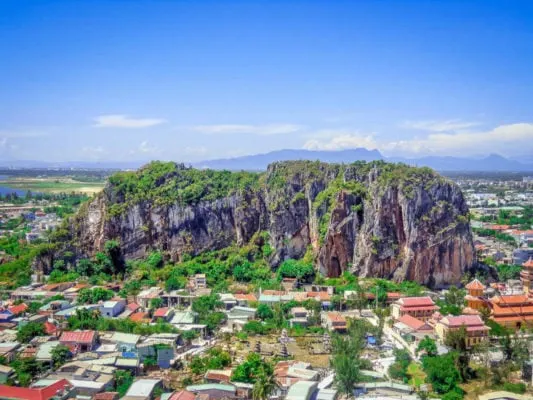
History, Legends, and Cultural Influence of the Marble Mountains
The Marble Mountains hold as much myth and memory as marble and limestone. Local legend claims a golden dragon laid an egg here—the crack of its shell formed the five hills. Cham artifacts and ancient steles discovered in the caves hint at a confluence of cultures dating back over a thousand years, entwined with Vietnamese Buddhism and later, Daoist and Hindu traditions.
During the American-Vietnam War, the caves served as sanctuaries and field hospitals, adding a layer of recent memory to the site’s ancient spiritual legacy. Throughout centuries, the Marble Mountains’ influence on local art has been profound, especially in Non Nuoc’s marble sculpture tradition. Craftsmen developed new techniques to honor the natural beauty and spiritual resonance of this rare stone, creating world-famous carvings sold throughout Vietnam and Indochina.
The Marble Mountains’ proximity to Hoi An and the Son Tra Peninsula binds them to the broader cultural and historic tapestry of Central Vietnam. Whether you come to reflect in silence or immerse yourself in the legends, you’ll sense how these spiritual mountains shape the beliefs and creativity of those who live in their shadow.
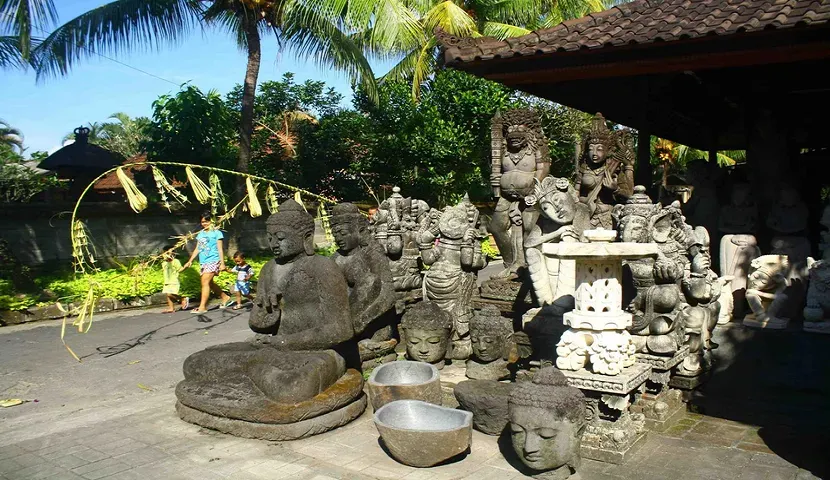
Visitor Guide: Hiking, Panoramic Views, and Marble Carving Village
Exploring the Marble Mountains is both adventure and pilgrimage. Thuy Son offers the main hiking trail: ascend hundreds of stone steps—smooth from centuries of use—or take the modern glass elevator (fee: 30,000 VND/ride, plus entrance ticket 40,000 VND/adult) for easier access. Plan at least two hours for a full circuit, including Thuy Son’s summit, Am Phu Cave (20,000 VND), and its panoramic terrace overlooking the Da Nang seacoast, city, and Dragon Bridge.
For photographers, sunrise and late afternoon bring the best light on Marmorberge’s intricate rock faces and gleaming pagoda roofs. Remember to wear sturdy footwear, bring water, and respect the religious nature of temples with modest dress. Non Nuoc Stone Carving Village sits at the mountains’ base, famous for workshops where you can try your hand at marble sculpture (fees vary by workshop). This is a prime spot for meaningful souvenirs and hands-on experiences with Vietnamese marble artistry.
Guided tours are offered, but self-guided routes—mapped clearly on site—allow independent visitors to discover hidden passages and secret shrines. Ovuigo recommends booking in advance during peak season, but you can usually purchase tickets on arrival.
We don’t run tours — we craft experiences.
Each journey is a story written just for you,
designed for those who wish to explore Vietnam slowly, deeply, and meaningfully.
No fixed itineraries. No crowds.
Just you — and the moments that truly matter.
Contact us via Whatsapp or call +84868319161 for personalized suggestions, practical tips, or to share your travel goals!
Ready for your next adventure? Discover curated stays at The Manor Hoi An, Hola 1, and Hola 2 — your perfect base for exploring Central Vietnam.

